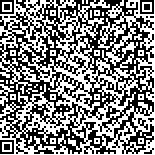| 摘要: |
| 目的 区域特点背景下,利用遥感手段实时获取局部区域耕地复种信息并分析其时空变化特征,可有效反映区域农业集约化变化趋势。方法 文章以鄱阳湖平原为研究区域,利用MODIS09Q1数据建立二波段增强型植被指数(Two-band Enhanced Vegetation Index,EVI2);基于时序EVI2,利用二次差分法提取研究区2001—2020年耕地复种频率逐年结果;基于Mann-Kendall检验方法、最小二乘法、转移矩阵等方法分析20年复种时空变化特征。结果 基于EVI2提取复种频率的总体精度为90.70%,Kappa系数0.81,满足应用要求。研究区复种以一年二熟为主,耕地整体复种水平以2013年为突变年份呈波动上升趋势,2001—2013年研究区复种降低,2013—2020年则表现为上升趋势,其中2020年复种较2018年和2019年都有所上升,表明恢复早稻政策作用明显。空间上看,20年间研究区82.14%的耕地复种并未表现出明显的变化,保持稳定状态;复种显著降低区域主要分布在余江县、鹰潭市、抚州市、南昌市等县市区部分区域,显著上升区域则主要分布在新建县、余干县北部、鄱阳县北部等。从转移类型上来看,主要发生一年一熟和一年二熟间的相互转换。2001—2013年一年二熟转为一年一熟现象严重,2013—2020年则一年一熟转为一年二熟现象明显。结论 基于EVI2提取复种频率取得了良好的效果。长时序复种频率时空变化特征反映了研究区耕地集约化程度加强的趋势,可为区域“藏粮于地”战略布局提供数据支撑和理论依据。未来研究可进一步从种植制度的视角去理解多年的不同种植制度和休耕策略是如何结合的,从而丰富耕地集约化评价理论体系。 |
| 关键词: 复种频率 二次差分法 遥感 EVI2 鄱阳湖平原 |
| DOI:10.7621/cjarrp.1005-9121.20211215 |
| 分类号:S127;S282 |
| 基金项目:国家自然科学基金项目“中国耕地复种潜力提升空间及优化配置”(41871356);国家重点研发计划项目“全球粮食供需变化下的中国耕地可持续化研究” (2017YFE0104600) 课题:全局尺度耕地利用可持续性提升模式研究 |
|
| SPATIOTEMPORAL VARIATION OF MULTIPLE CROPPING IN POYANG LAKE PLAIN FROM 2001 TO 2020 |
|
Shen Ge1,2, Wang Cong1,2, Yu Qiangyi1,2, Zhou Qingbo3, Wu Wenbin1,2
|
|
1.Institute of Agricultural Resources and Regional Planning, Chinese Academy of Agricultural Sciences, Beijing 100081, China;2.Key Laboratory of Agricultural Remote Sensing, Ministry of Agriculture and Rural Affairs, Beijing 100081, China;3.Agricultural Information Institute, Chinese Academy of Agricultural Sciences, Beijing 100081, China
|
| Abstract: |
| It is of great significant for the national food security to obtain detailed information of the spatiotemporal change of multiple cropping frequency (MCF) in a timely manner. In this study, we selected Poyang Lake Plain as study area, and selected MODIS 09Q1 data with time resolution of 8 days and spatial resolution of 250 meters as the remote sensing data source. The annual results of MCF in the study area from 2001 to 2020 were extracted by quadratic difference method based on yearly EVI2 time series curve. And we used the Mann-Kendall test, least square method, and transfer matrix to analyze the spatiotemporal variation characteristics of MCF in 20 years. Our study showed that the overall accuracy of MCF extraction based on EV2 was 90.70% and Kappa coefficient was 0.81, which met the application requirements. Double-cropping dominated in the study area. From 2001 to 2020, the overall multiple cropping of cropland in the study area showed a fluctuating increasing trend with 2013 as the change node. The multiple cropping in the study area decreased from 2001 to 2013, but showed an upward trend from 2013 to 2020. And the multiple cropping in 2020 increased compared with that in 2018 and 2019, indicating that the policy of restoring early rice had a significant effect. From the point of the type of transfer, it mainly occured the interchange between single-cropping and double-cropping. 82.14% cropland in the study area did not show significant changes in the past 20 years, but remained stable. The spatiotemporal characteristics of MCF in long time series reflected the trend of the intensification of cropland, which can provide data support and theoretical basis for the adjustment and distribution of regional agricultural policies. It will make more sense to understand the characteristics of a specific cropping system which combines different cropping and fallow strategies in multiple years in the further study, so as to enrich the theoretical evaluation system of cropland intensification. |
| Key words: multiple cropping frequency quadratic difference method remote sensing EVI2 Poyang Lake Plain |

